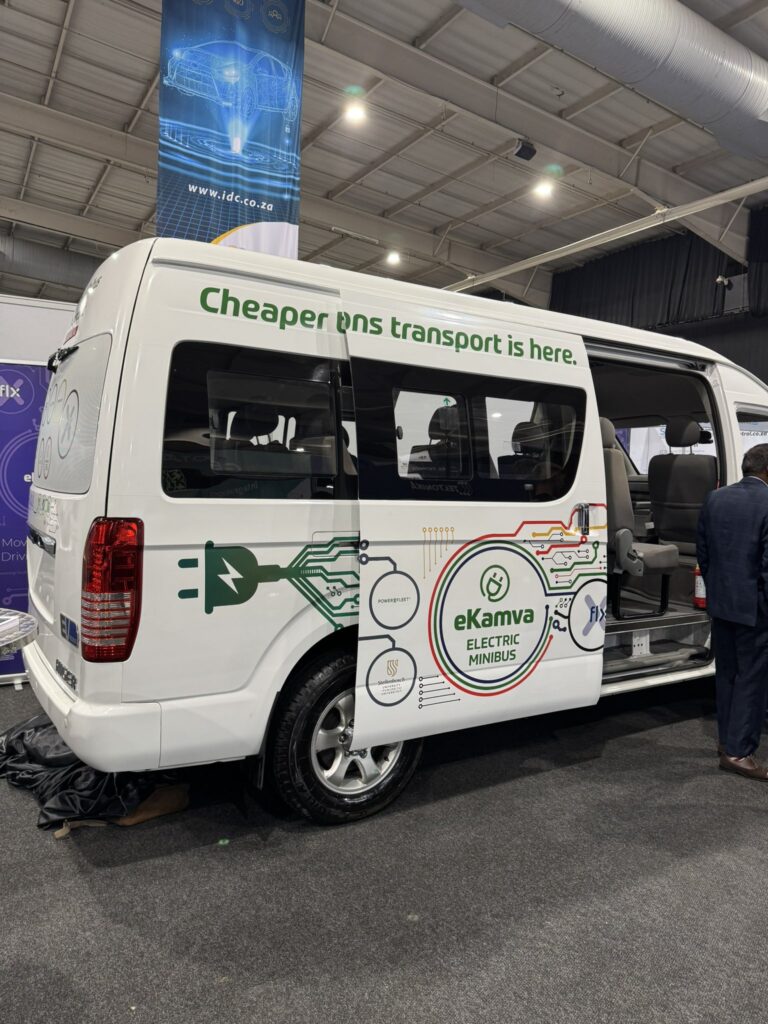South Africa is making bold strides towards greener public transportation with the launch of its first zero-emission electric minibus taxi, known as the eKamva. This groundbreaking vehicle is set to transform the country’s taxi industry by offering a cleaner, more cost-effective solution for urban mobility. Spearheaded by GoMetro, a leading fleet management company, the project reflects the nation’s commitment to sustainability and innovation.
The Future of Public Transportation: eKamva
Derived from the Xhosa word for “future,” the eKamva is a symbol of forward-thinking technology and environmental responsibility. This 15-seater electric vehicle has been developed through a collaboration between several key players: GoMetro, Powerfleet, HSW, ACDC Dynamics, and Stellenbosch University. Together, these entities have created a vehicle that promises to reshape the taxi sector.
Impressive Performance and Charging Efficiency
Justin Coetzee, CEO of GoMetro, highlighted the eKamva’s remarkable capabilities. On a single charge, the minibus can travel over 200 kilometers, making it highly practical for urban routes. When it comes to charging, the vehicle offers flexibility: it can be rapidly charged within 75 minutes using a 60 kW DC charger or charged overnight for 10 hours via a standard setup. This dual-charging option ensures that operators can maintain continuous service without long downtime periods.
Cost-Effectiveness: A Game-Changer for Operators
One of the most appealing aspects of the eKamva is its cost-efficiency. Operating costs for this electric minibus taxi are significantly lower than traditional vehicles, with potential savings ranging between 40% and 70%. These savings depend on factors like fuel costs and specific taxi routes, but the reduced maintenance and elimination of fuel expenses offer long-term financial benefits for taxi operators.
Charging Infrastructure: Paving the Way for Adoption
In support of the eKamva’s introduction, a network of charging stations will be developed near major taxi ranks. The first two charging hubs are scheduled to be constructed at Century City and Stellenbosch taxi ranks in Cape Town within the next year. This infrastructure development is crucial for ensuring the widespread adoption of electric taxis and minimizing concerns about range limitations.
Simplified Maintenance: Fewer Parts, Fewer Problems
The eKamva’s electric design means fewer moving parts, which translates into lower maintenance requirements. Traditional vehicles demand regular oil changes, air filter replacements, and spark plug maintenance, but the eKamva eliminates these tasks. As a result, there are fewer points of failure, increasing the reliability of the vehicle and reducing overall operating costs for taxi drivers.
Integrating eKamva into the Existing Industry
The consortium behind the eKamva is not only focused on introducing the vehicle but also on ensuring its seamless integration into South Africa’s existing minibus taxi infrastructure. They plan to collaborate with current service providers, offering training on maintaining and operating these electric vehicles. This approach guarantees a smooth transition while tapping into the established parts and service markets, making the shift to electric vehicles as efficient as possible.
A Growing Electric Vehicle Market
The launch of the eKamva comes at a time when South Africa’s electric vehicle (EV) market is on the cusp of substantial growth. Forecasts indicate that the market could generate $93.3 million in revenue by 2024. This momentum is expected to continue, with projections estimating an annual growth rate of 8.69% from 2024 to 2029, potentially reaching a market volume of $141.6 million by 2029. As electric vehicles become more prevalent, the eKamva is well-positioned to lead the way in the public transportation sector.
Policy Challenges: The Cost of Electric Taxis

Despite the promising outlook, there are still hurdles to overcome. South Africa’s current policies classify electric vehicles as luxury items, resulting in import duties of 40%. This significantly increases the cost of electric minibuses like the eKamva, with prices ranging from R1.1 million to R1.2 million. To make electric taxis more accessible, Coetzee has called for policy reform, particularly the removal of luxury taxes on electric vehicles. Such changes could lower the price of the eKamva to between R650,000 and R750,000, comparable to the cost of a Toyota Quantum, a popular conventional minibus taxi.
A Step Towards Sustainable Urban Mobility
The introduction of the eKamva marks a pivotal moment in South Africa’s journey towards sustainable public transportation. As the country grapples with increasing environmental challenges and the need for efficient urban mobility solutions, the eKamva offers a viable and forward-thinking alternative. The success of this electric minibus taxi initiative could set the stage for a broader adoption of electric vehicles across South Africa’s public transport network, fundamentally transforming urban commuting.
The name “eKamva” is derived from the Xhosa word for “future,” reflecting the project’s forward-thinking approach. This innovative vehicle is the result of collaboration between GoMetro, Powerfleet, HSW, ACDC Dynamics, and Stellenbosch University.
In conclusion, South Africa’s rollout of the zero-emission eKamva is not only a response to the environmental and economic challenges facing the nation but also a vision of the future of public transportation. By embracing electric vehicles like the eKamva, the country is taking a significant step toward cleaner, more efficient mobility, paving the way for a sustainable future.







